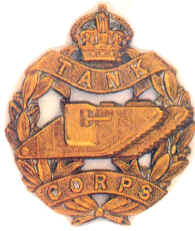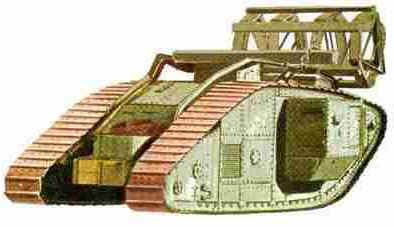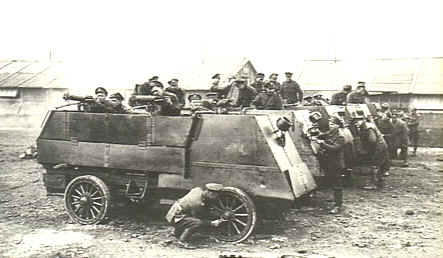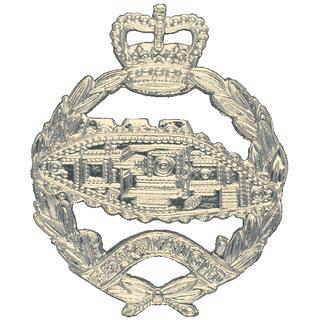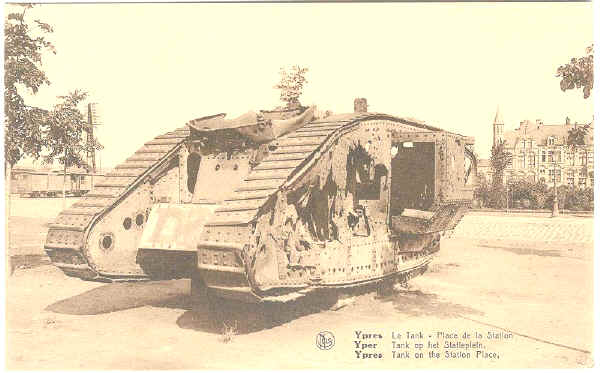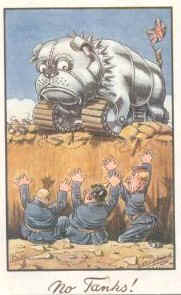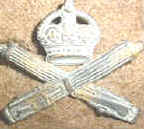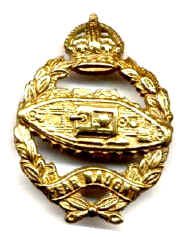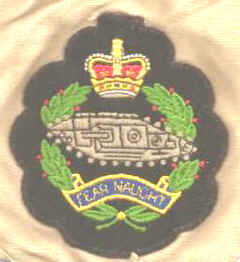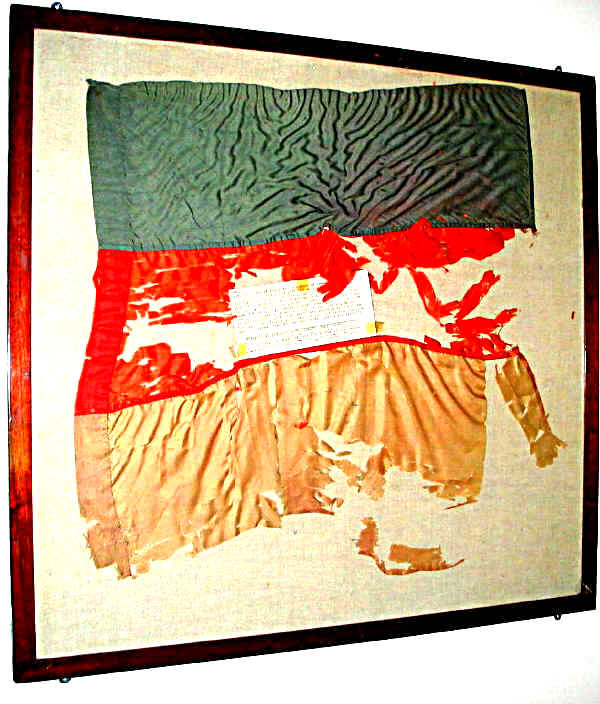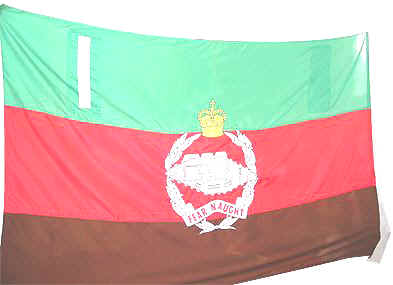|
THE HISTORY OF THE RTR
THE INVENTION OF THE TANK
On the 13th June 1900 Major General Sir Ernest Swinton was serving with
the British Forces in the Boer War. On that precise date, he visualised
the requirement for an armoured fighting vehicle to defeat the
destructive power of the machine gun. The tank, a revolutionary new
weapon system, born of General Swinton's vision, was to break the
stalemate of trench warfare and the dominance of the machine gun of the
battlefields of Flanders sixteen years later.
FORMATION
The story of The Royal Tank Regiment is one of struggle, triumph and
achievement. Its origins are a mere three-quarters of a century old, but
those years have seen the stalemate of trench warfare overcome, the
restoration of mobility and the establishment of the tank and mechanised
forces, as a dominant factor in battle. The tank reaffirmed its position
as the decisive weapon on the battlefield during the Gulf War.
The present Royal Tank Regiment,
composed of two regular regiments, is the direct heir to the original
armoured car pioneers of 1914, the Naval Brigade and the RNAS squadron
which augmented the British Expeditionary Forces for the defence of
Antwerp in August of that year.
THE FIRST WORLD WAR
When the first tanks were produced in 1916, they were manned by members
of the Machine Gun Corps, formed into six companies which were
collectively known as the Heavy Branch.
The very first battle involving tanks
took place on the Somme. About thirty British Mark 1 tanks attacked
German positions between the villages of Flers and Courcelette, on
Friday 15 September 1916. The arrival of the tanks on the battlefield
signalled the end of trench warfare, which had suffocated both sides in
the 1914-18 conflict.
During this action the Press seized on
a report from an aircraft crew, which said that "a tank is walking
down the main street of Flers with the British Army cheering behind
it." This was "D" Company, later the 4th Royal Tank
Regiment. These companies were expanded to form battalions and were
renamed the Tank Corps in 1917.
The first battle between two opposing
tanks took place near the village of Cachy on 24 April 1918. The German
A7V tank Nixe (Lt Biltz), engaged three British Mark IV tanks, and
damaged two, but was knocked out by the third, commanded by 2/Lt Frank
Mitchell.
By December 1918 there were 26
battalions, and as well as serving in France, a detachment from the
Corps had served under Allenby at Gaza, Palestine in 1917. The Corps saw
almost continuous action, winning four VC's.
CAMBRAI
In France at dawn on November 20th, 1917, some 300 British Mark IV tanks
of the Tank Corps, led by Brigadier Hugh Elles, created a major break in
the German Hindenburg Line and nearly reached Cambrai itself. This was
the Battle of Cambrai, and so successful was this action, that the
church bells were rung throughout Great Britain. Each year this great
battle is commemorated as "Cambrai Day".
BETWEEN THE WARS
At the end of World War 1 with the status of the Tank Corps in the
greatest doubt, three small tank detachments were despatched to Russia,
to support the White Russians against the Bolsheviks. One British manned
tank achieved the capture of Tsaritsin, later called Stalingrad, now
known as Volgograd.
By 1920 the Tank Corps was reduced to
a Depot and four battalions, becoming established in its own right in
1923 when it was granted the prefix "Royal" by King George V,
its Colonel-in-Chief since 1918. At this time it also officially adopted
the black beret as its distinctive headgear, with the silver badge and
'Fear Naught' motto.
Thereafter Royal Tank Regiment
armoured car and light tank units helped maintain the peace throughout
the Empire in Iraq, Persia, Palestine, India and Egypt until 1939 when
war clouds once more gathered over Europe.
THE SECOND WORLD WAR
The Corps changed to its present title in 1939, with the formation of
the Royal Tank Regiment. The RTC had, up until 1928, been entirely
responsible for all "armour" in the British Army. Its schools
began the mechanisation and training of the cavalry, and the RTR itself
expanded between 1935 and 1938 into eight regular battalions.
From the outset of World War II, both
Sir Winston Churchill and Field Marshal the Viscount Montgomery of
Alamein, made it clear that they wished to be associated with the Royal
Tank Regiment - the value of the tank as a decisive battlefield weapon
was being recognised.
By the end of the Second World War,
the tank had once again proved itself a major battle winner, and having
fought in most of the major engagements in Europe, North Africa, the
Middle and Far East, the Regiment had battalions spread all over the
globe. Two more VC's had been awarded, together with countless other
decorations, to men who, "...cheerfully went to war in tin cans,
closely surrounded by a lethal mixture of petrol and ammunition.
DUNKIRK
Both 4th and 7th RTR fought in France as part of the British
Expeditionary Force. At Arras, on 21 May 1940 they smashed into the rear
of Rommel's 7th Panzer Division with good effect. However, both
regiments suffered heavily in the end and the survivors escaped via
Dunkirk. Three other RTR regiments fought in Western France as part of
the British First Armoured Division.
ALAMEIN
Throughout the desert war, elements of the RTR saw almost continuous
action. In particular the great victory over the Italian at Beda Fomm.
The RTR was heavily committed at El Alamein in October 1942, not only in
conventional tanks but also in mine-sweeping flail tanks called
Scorpions. While Montgomery's Eighth Army pursued retreating Axis forces
across Libya, a new Army under General Eisenhower landed in Tunisia. Here
RTR crews in Churchill tanks met and defeated the mighty German Tigers.
D-DAY
Major General Sir Percy Hobart, an RTR officer since 1923, is best known
as commander of the famous 79th Armoured Division. Equipped with special
purpose tanks known as Funnies this division spearheaded the British
attack on D-Day, 6 June 1944 and continued to support Allied forces in
Europe until the end of the war. Once again the RTR played a vital part,
notably in such events as the attack on Le Havre, the fantastic six-day
dash from Normandy to Belgium and the crossing of the river Rhine in
March 1945. |

